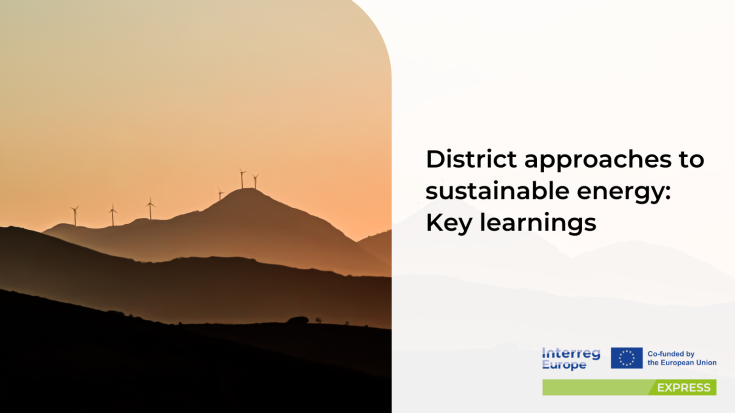Italy | District approaches to sustainable energy

On 9 November 2023, the Policy Learning Platform of Interreg Europe organized a webinar on the topic of district approach to sustainable energy.
Building renovation that improves energy efficiency and integrates renewable energies needs to be implemented at a large scale, in order to reach the ambitious decarbonisation targets.
Many districts are comprised of buildings with similar construction and characteristics, applying district-level approaches can be more cost-efficient by bundling activities into a common project.
Tackling the district level also allows for joint planning between renovations and considering the public space between and around dwellings. This means interventions can also target other policy areas such as improving air quality and health, tackling social exclusion, and promoting sustainable mobility.
During the webinar, the challenges and benefits of district energy solutions, with proven solutions from across Europe, as identified in Interreg Europe projects are explored.
Integrating district approaches into regional planning and strategies
Lorenzo Federiconi, a representative from the Marche Region and a partner in the EXPRESS project funded by the Interreg Europe programme, delivered a presentation on the integration of district approaches into regional planning and strategies.
In particular, the Certidistricts action, contained in the Action Plan of the Interreg Europe LC Districts project ended in January 2023, was presented. The action identifies a methodology for designing effective low-carbon districts through experimentation in three different territorial samples. It consists of the dual application of the 2 ITACA protocols, the one at the building scale (PdR 13/2019) and the synthetic one at the Urban scale.
The ITACA Protocol, also called UNI PdR 13:2019, is a multi-criteria assessment tool for the environmental sustainability of buildings and was developed from the international SBTool assessment model.
The use of the protocols at the project drafting stage at different scales support the engineer in identifying the most effective solutions from an energy and environmental perspective. Achieving a higher score per criterion and thus a better overall final score certifies the high energy-environmental quality of the intervention already at the design stage.
The choice of more effective construction techniques and more sustainable planning methodologies thus enable the decision maker to achieve environmental goals with full awareness and keeping key indicators under control.
The protocol is applied at the regional level, taking into account not only buildings but also infrastructure, public spaces and services. The approach has been integrated into the Regional Environmental Energy Plan and the ERDF Operational Programme.
The EXPRESS project aims to decrease the regions’ dependency on energy imports and fossil energy and to increase their energy self-sufficiency and share of renewable energy by improving regional policies.
We believe that this kind of district rather than individual building approach in combination with the application of an energy-environmental certification tool is also particularly suitable for promoting territorial pilot projects to achieve the main goal of the EXPRESS project.
Event recording